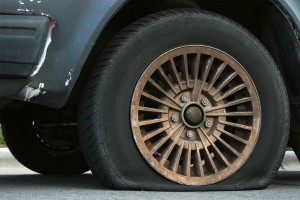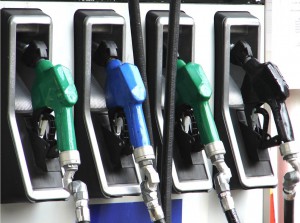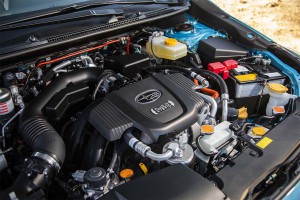
It may be a while before you’ll be driving again. A few simple steps will ensure your car remains in good shape while idled.
Rather than miles per gallon, you’re likely measuring miles per week if you’re one of the millions of Americans sheltering in place during the coronavirus pandemic.
It’s anyone’s guess how long the current crisis will last, even if your local lockdown is set to expire in the coming weeks. Leaving a car to sit idle for a long period of time can create a variety of problems, however, from dead batteries to stale gas and flat-spotted tires.
If you’ve parked your own car for the duration you should consider various steps to ensure it will be ready to fire up and then run safely when you finally do put it back on the road.
Keep Your Battery Charged Up
One of the most likely problems motorists will face if they’re let their cars sit for more than a week or two is a dead battery. That’s particularly true with newer products equipped with all the latest electronic gear, including onboard infotainment and security systems and the capacity for smartphone-style over-the-air updates. The engine may be turned off but, in many cases, all those digital systems could continue drawing power from your vehicle’s conventional 12-volt battery, experts note.
(Coronavirus pandemic likely to have long-term impact on auto industry.)
If you already have a trickle charger you can connect to the battery, check the instructions and use it, as recommended. If you don’t have a booster/charger you might still be able to order one online. The latest ones, using their own lithium-ion batteries, are compact and reasonably affordable.
You could also start the car and run it – though you’d need to do so for three to four hours if it’s deeply drained. And don’t even bother if you can’t keep it running for at least 15 minutes, as you will use more energy than you gain in firing the engine up.
The simplest way to solve the problem is to just disconnect the battery. You can disconnect both cables or, if you prefer, just the ground cable attached to its negative terminal. Even then, you will continue losing charge, but at a much slower rate. Note that with some cars, disconnecting the battery might require you to re-enter a code or password later for the onboard information system which may automatically disable itself as part of a manufacturer’s theft-protection strategy.
Don’t Ignore Your Tires
Your car’s tires are either to forget about, but they can be particularly vulnerable to problems if a vehicle sits in one place for an extended period of time.

Keep your tires properly inflated. You can develop flats — or flat spots — if they sit for a long time.
Even while your car is idled it’s a good idea to check their pressure – especially when the weather is still cool, as that’s when tires are more likely to lose pressure. Underinflated tires are vulnerable to developing permanent flat spots where they’re contacting the ground. That will affect how they drive later on. If they’re low you might be able to pump them back up at home. If you do go to a service station take plenty of care, disinfecting anything you will touch with wipes or liquid. Then wash your hands.
At the very least, check your tire pressure as soon you do start driving again.
(Plummeting auto sales causing inventories, layoffs to rise.)
Stabilize Your Fuel
Gas can go stale if you let it sit in your tank for an extended period of time. “The key thing to remember is that gasoline is a living chemical,” said Greg Brannon, director of automotive engineering for AAA.
What’s in your tank is actually a complex mixture of petroleum distillates and additives, some of which can evaporate, even in a couple of months. Cold weather can further complicate the problem which is why owners of boats and recreational vehicles idled over the winter months routinely use stabilizing additives to keep their gas fresh.
If you still can, make sure your gas tank is as full as possible before parking it for extended periods. That leaves less air space in the tank for those volatile additives to evaporate into. It also reduces the likelihood that moisture can condense and mix into the fuel.

Gas will go bad over time. It’s best to have a full tank when your car is idled. You might also want to add a fuel stabilizer, like those used in boats and RVs parked over the winter.
Making sure your gas stays fresh is critical because it otherwise can lead to engine hesitation and rough idling, and might even make it difficult to start the car back up.
(Automakers reach out to consumers: extend leases, relax loan schedules, stretch warranties.)
Other Things to Consider
Some motorists have been unpleasantly surprised to discover squirrels and rodents under the hood after leaving a vehicle idled for a long time. Several manufacturers have adopted wiring with organic-based insulation that appears to encourage rodents to chew on it, potentially causing short circuits and other issues.
You might also find your brakes acting a bit grabby after sitting for an extended period, and parking brakes might clunk when first released. Over time, brakes may develop a slight patina of rust on their outer surfaces. Don’t overtax them initially. Let gentle usage wear that thin coat of rust away.
Oil and other fluids can begin to break down over time, though that is likely to only be a problem if you were well overdue on, say, an oil change, or if the car is idled for six months or more.
Be aware that cold weather can exacerbate the problems a car experiences when idled for long periods. Extreme heat creates other challenges. But it appears reasonably certain most of us will be back on the road before we reach the peak temperatures of summer.

